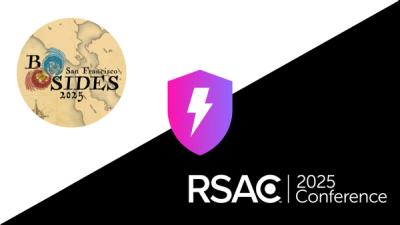
Security News
NVD Concedes Inability to Keep Pace with Surging CVE Disclosures in 2025
Security experts warn that recent classification changes obscure the true scope of the NVD backlog as CVE volume hits all-time highs.
rolling-rate-limiter
Advanced tools
Rate limiter that supports a rolling window, either in-memory or backed by Redis
This is an implementation of a rate limiter in node.js that allows for rate limiting with a rolling window. It can use either in-memory storage or Redis as a backend. If Redis is used, multiple rate limiters can share one instance with different namespaces, and multiple processes can share rate limiter state safely.
This means that if a user is allowed 5 actions per 60 seconds, any action will be blocked if 5 actions have already occured in the preceeding 60 seconds, without any set points at which this interval resets. This contrasts with some other rate limiter implementations, in which a user could make 5 requests at 0:59 and another 5 requests at 1:01.
Important Note: As a consequence of the way the Redis algorithm works, if an action is blocked, it is still "counted". This means that if a user is continually attempting actions more quickly than the allowed rate, all of their actions will be blocked until they pause or slow their requests.
This behavior is somewhat counterintuitive, but it's the only way that I have found that uses an atomic MULTI set of commands for Redis. Without this, race conditions would be possible. See more below..
Version 0.2 was released August 31 2020. The method of operation remains the same, but the API has changed. A short summary of the changes:
RateLimiter class.wouldLimit method is now available to see if an action would be blocked, without actually "counting" it as an action.limitWithInfo and wouldLimitWithInfo methods are available to return more information about how and why an action was blocked or not blocked.redis and ioredis clients.Basic use in an Express application.
const { RedisRateLimiter } = require('rolling-rate-limiter');
const limiter = new RedisRateLimiter({
client: redisClient, // client instance from `redis` or `ioredis`
namespace: 'rate-limiter', // prefix for redis keys
interval: 60000, // milliseconds
maxInInterval: 10,
});
app.use(function(req, res, next) {
limiter.limit(req.ipAddress).then((wasBlocked) => {
if (wasBlocked) {
return res.status(429).send("Too many requests");
} else {
return next();
}
})
});
RedisRateLimiter - Stores state in Redis. Can use redis or ioredis clients.InMemoryRateLimiter - Stores state in memory. Useful in testing or outside of web servers.interval: number - The length of the rate limiter's interval, in milliseconds. For example, if you want a user to be able to perform 5 actions per minute, this should be 60000.maxInInterval: number - The number of actions allowed in each interval. For example, in the scenario above, this would be 5minDifference?: number - Optional. The minimum time allowed between consecutive actions, in milliseconds.client: Client (Redis only) - The Redis client to use.namespace: string (Redis only) - A string to prepend to all keys to prevent conflicts with other code using Redis.All methods take an Id, which should be of type number | string. Commonly, this will be a user's id.
limit(id: Id): Promise<boolean> - Attempt to perform an action. Returns false if the action should be allowed, and true if the action should be blocked.wouldLimit(id: Id): Promise<boolean> - Return what would happen if an action were attempted. Returns false if an action would not have been blocked, and true if an action would have been blocked. Does not "count" as an action.limitWithInfo(id: Id): Promise<RateLimitInfo> - Attempt to perform an action. Returns whether the action should be blocked, as well as additional information about why it was blocked and how long the user must wait.wouldLimitWithInfo(id: Id): Promise<RateLimitInfo> - Returns info about what would happened if an action were attempted and why. Does not "count" as an action.RateLimitInfo contains the following properties:
blocked: boolean - Whether the action was blocked (or would have been blocked).blockedDueToCount: boolean - Whether the action was blocked (or would have been blocked) because of the interval and maxInInterval properties.blockedDueToMinDifference: boolean - Whether the action was blocked (or would have been blocked) because of the minDistance property.millisecondsUntilAllowed: number - The number of milliseconds the user must wait until they can make another action. If another action would immediately be permitted, this is 0.actionsRemaining: number - The number of actions a user has left within the interval. Does not account for minDifference.FAQs
Rate limiter that supports a rolling window, either in-memory or backed by Redis
We found that rolling-rate-limiter demonstrated a not healthy version release cadence and project activity because the last version was released a year ago. It has 1 open source maintainer collaborating on the project.
Did you know?

Socket for GitHub automatically highlights issues in each pull request and monitors the health of all your open source dependencies. Discover the contents of your packages and block harmful activity before you install or update your dependencies.

Security News
Security experts warn that recent classification changes obscure the true scope of the NVD backlog as CVE volume hits all-time highs.

Security Fundamentals
Attackers use obfuscation to hide malware in open source packages. Learn how to spot these techniques across npm, PyPI, Maven, and more.

Security News
Join Socket for exclusive networking events, rooftop gatherings, and one-on-one meetings during BSidesSF and RSA 2025 in San Francisco.